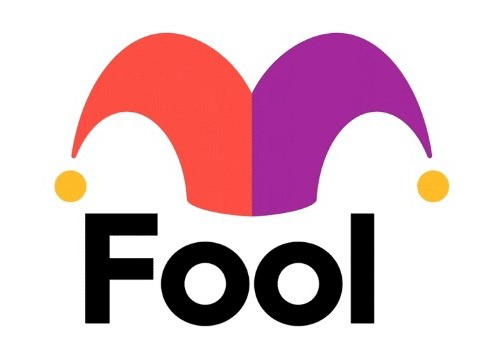For a majority of retirees, Social Security is more than just a monthly check. It represents a financial backstop for aging Americans who can no longer provide for themselves.
Based on data from the Center on Budget and Policy Priorities, Social Security pulled more than 22 million people above the federal poverty line in 2023, including north of 16.3 million adults aged 65 and over. Separately, 23 years of annual surveys from national pollster Gallup have found that 80% to 90% of retirees rely on their monthly payout, to some degree, to cover their expenses.
Where to invest $1,000 right now? Our analyst team just revealed what they believe are the 10 best stocks to buy right now. Learn More »
In other words, maximizing what future generations of retirees will receive from Social Security isn’t a luxury — it’s a practical necessity. But in order to optimize what retirees will receive from America’s leading social program, they’ll first need to understand how their monthly payout is calculated, as well as how important their claiming age can be.
Initially collecting retired-worker benefits as early as possible (age 62) or with a middle-ground approach (age 67) can lead to notable differences in average monthly and lifetime benefits.

Image source: Getty Images.
These four factors influence your monthly Social Security check
While Social Security might not be the easiest government program to understand, one aspect that’s incredibly straightforward is how your monthly retired-worker benefit is calculated. The Social Security Administration (SSA) leans on four factors to determine how much you’ll be paid:
- Work history
- Earnings history
- Full retirement age
- Claiming age
These first two variables — work and earnings history — are tied at the proverbial hip. To calculate your monthly retired-worker benefit, the SSA will account for your 35 highest-earning, inflation-adjusted years in the labor force. If you earned a robust wage or salary throughout your lifetime, there’s a decent chance you’ll receive an above-average Social Security check during retirement.
But the SSA can also penalize you if you’ve worked fewer than 35 years. For every year less of 35 worked, $0 will be averaged into your calculation, which will assure you can’t maximize your monthly payout.
The third factor of importance, and the only one you have absolutely no control over, is your full retirement age. This is the age you become eligible to receive 100% of your retired-worker benefit, and it’s entirely determined by the year you’re born.
Lastly, the age you file to receive benefits has a huge impact on what you’ll receive monthly and during your lifetime. Though retired workers can choose to receive benefits as early as age 62, they’re financially incented to be patient. Every year a worker waits to claim their payout can increase their monthly benefit by up to 8%, as you can see in the table.
| Birth Year | Age 62 | Age 63 | Age 64 | Age 65 | Age 66 | Age 67 | Age 68 | Age 69 | Age 70 |
| 1943-1954 | 75% | 80% | 86.7% | 93.3% | 100% | 108% | 116% | 124% | 132% |
| 1955 | 74.2% | 79.2% | 85.6% | 92.2% | 98.9% | 106.7% | 114.7% | 122.7% | 130.7% |
| 1956 | 73.3% | 78.3% | 84.4% | 91.1% | 97.8% | 105.3% | 113.3% | 121.3% | 129.3% |
| 1957 | 72.5% | 77.5% | 83.3% | 90% | 96.7% | 104% | 112% | 120% | 128% |
| 1958 | 71.7% | 76.7% | 82.2% | 88.9% | 95.6% | 102.7% | 110.7% | 118.7% | 126.7% |
| 1959 | 70.8% | 75.8% | 81.1% | 87.8% | 94.4% | 101.3% | 109.3% | 117.3% | 125.3% |
| 1960 or later | 70% | 75% | 80% | 86.7% | 93.3% | 100% | 108% | 116% | 124% |
Data source: Social Security Administration.
What’s the average Social Security benefit at ages 62 and 67?
Though there’s a wide variance in what a retired worker can receive each month from Social Security, there are advantages and drawbacks to every age within the traditional claiming range of 62 through 70. But within this range are two initial collection ages that are bound to remain exceptionally popular: 62 and 67.
Let’s take a brief look at the pros and cons associated with collecting benefits at 62 and 67, as well as examine the average benefit at each respective age.
Age 62
The most-enticing aspect of claiming at age 62 is not having to wait to get your hands on your benefit. This can be especially attractive for someone wanting to pay down debt or who isn’t currently working.
Another catalyst for collecting your retired-worker benefit as early as possible is the Social Security Board of Trustees forecasting an exhaustion of the Old-Age and Survivors Insurance Trust Fund’s (OASI) asset reserves by 2033. While Social Security is in no danger of bankruptcy or insolvency, a depletion of the OASI’s asset reserves would lead to sweeping benefit cuts of up to 21% for retired workers and survivor beneficiaries in eight years. Claiming as early as possible might be viewed as a way to front-run any potential cuts.
On the other hand, taking benefits at 62 ensures a permanent reduction to your monthly Social Security check of 25% to 30%, depending on your birth year.
What’s more, claiming benefits at age 62 can expose workers to the retirement earnings test, which allows the SSA to withhold some or all of their Social Security check, depending on how much they earn.
Age 67
The beauty of the middle-ground approach is that it minimizes or completely removes any permanent reduction to monthly benefits. In the case of initially collecting benefits at 67, which is the full retirement age for anyone born in or after 1960, it ensures that retired workers receive 100% of what they’re due.
On the other end of the spectrum, choosing to take benefits at age 67 could come back to haunt folks who live well into their 80s and beyond due to a lot of lifetime Social Security income being left on the table.
With these advantages and drawbacks in mind, let’s turn to what the average benefit is at ages 62 and 67.
Every year, the SSA’s Office of the Actuary (OACT) provides a detailed breakdown of monthly retired-worker benefits by age. Just keep in mind that the OACT’s breakdown is based on the age of a recipient and, except for age 62 claimants, may not have anything to do with their claiming age. For instance, retired workers who are 67 years old may have initially filed for benefits anywhere from age 62 through 67.
According to the SSA’s OACT, the roughly 590,400 age 62 retired-worker beneficiaries brought home an average of $1,298.26 in December 2023. In comparison, close to 2.92 million age 67 retired-worker beneficiaries received an average of $1,883.50. In other words, age 67 recipients collected 45% more per month, on average, than the earliest claimants.

Image source: Getty Images.
Analysis: There is a superior claiming age
Given the sizable disparity in take-home benefits between ages 62 and 67, you might be wondering if one (or more) claiming ages is superior to others. Based on an extensive statistical analysis conducted by United Income in 2019, there is.
In The Retirement Solution Hiding in Plain Sight, researchers at United Income leaned on data from the University of Michigan’s Health and Retirement Study to extrapolate the claiming decisions of 20,000 retired workers. The goal was to see how many of these retirees made an “optimal” decision — i.e., made the choice that led to the highest-possible lifetime income. Remember, maximizing your lifetime income may not be synonymous with the biggest monthly benefit.
United Income’s initial finding isn’t a surprise: Only 4% of the 20,000 workers analyzed had optimized their benefit. Since we don’t know the date of our “expiration,” it’s impossible to know ahead of time if we’ve made the best possible claiming decision.
Additionally, we all have unique variables that can influence our claiming age. These factors include our financial needs during retirement, access to retirement/savings accounts, tax implications, marital status, and personal health, to name a few.
But it’s United Income’s other sweeping conclusion that should rightly raise eyebrows. In addition to few retired workers optimizing their payout, researchers found a clear inversion between actual and optimal claiming ages.
For example, 79% of the retired workers studied began collecting their Social Security check at ages 62, 63, or 64. However, only 8% of claims proved optimal (when extrapolated) at these three ages on a combined basis.
Comparatively, United Income showed that 57% of retirees studied would have maximized their lifetime Social Security income by claiming at age 70. For what it’s worth, 67 was the next-likeliest claiming age to maximize benefits (around 10% of the retired workers studied), but trailed age 70 by a substantial amount.
Even with these findings, there’s still no one-size-fits-all blueprint when it comes to collecting retired-worker benefits. For people with health conditions that can shorten their life expectancy, or spouses with substantially lower lifetime income than their significant other, an early claim can make perfect sense.
But when examined as a whole, future generations of retirees are more likely to benefit (in the form of higher lifetime income collection) by being patient.
The $22,924 Social Security bonus most retirees completely overlook
If you’re like most Americans, you’re a few years (or more) behind on your retirement savings. But a handful of little-known “Social Security secrets” could help ensure a boost in your retirement income. For example: one easy trick could pay you as much as $22,924 more… each year! Once you learn how to maximize your Social Security benefits, we think you could retire confidently with the peace of mind we’re all after. Simply click here to discover how to learn more about these strategies.
View the “Social Security secrets” »
The Motley Fool has a disclosure policy.
 fool.com
fool.com benzinga.com
benzinga.com



